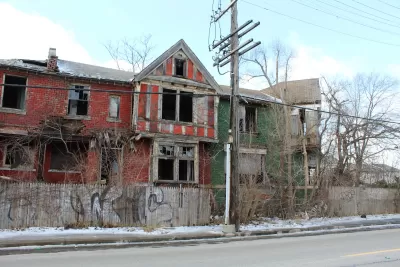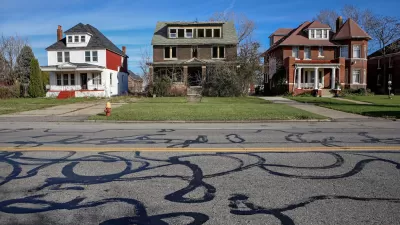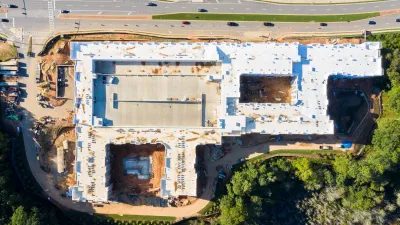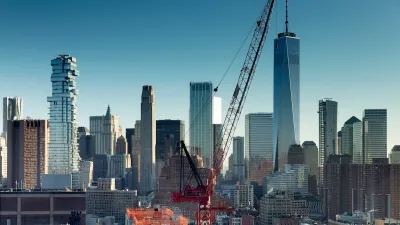Efforts by the city and residents have generated 17,000 new housing units in the last five years.

Detroit’s effort to rehab vacant homes and create new affordable housing units is paying off, thanks in part to the efforts of regular citizens. In a piece republished in Strong Towns, Alex Alsup zeroes in on one immigrant enclave that has experienced a major transformation since 2020.
“The area is found in the western corner of Detroit’s Midwest neighborhood, bounded by Tireman to the north, Livernois to the east, West Warren to the south and the Joe Louis Greenway/Dearborn border to the west.” Alsup worked with Michael Hudson to survey roughly 1,000 homes in the area via Google Street View, capturing the changes that occurred since 2020.
Their findings are impressive: “Over the past five years, 125 homes in the Midwest neighborhood have been reoccupied, increasing the number of occupied homes in the area by 22%. An additional 75-80 homes have undergone substantial rehab, though they remained occupied throughout the last five years.” The number of vacant homes in the area fell by 70 percent, and only 13 percent of reoccupied homes are owned by non-Detroit residents or entities. “Much of the inventory for rehab here seems to have been supplied by Detroit Land Bank sales: 77 of 125 reoccupied homes were owned by the Detroit Land Bank circa 2019,” signaling the importance of land banks as a conduit to affordable housing and homeownership.
For Alsup, “The story of the Midwest neighborhood is a testament to what can happen when communities take the lead in revitalizing their neighborhoods. It's a model that the city should not only acknowledge but actively support.”
FULL STORY: A Closer Look at Five Successful Years of Housing Rehab in Detroit

Study: Maui’s Plan to Convert Vacation Rentals to Long-Term Housing Could Cause Nearly $1 Billion Economic Loss
The plan would reduce visitor accommodation by 25,% resulting in 1,900 jobs lost.

North Texas Transit Leaders Tout Benefits of TOD for Growing Region
At a summit focused on transit-oriented development, policymakers discussed how North Texas’ expanded light rail system can serve as a tool for economic growth.

Why Should We Subsidize Public Transportation?
Many public transit agencies face financial stress due to rising costs, declining fare revenue, and declining subsidies. Transit advocates must provide a strong business case for increasing public transit funding.

How to Make US Trains Faster
Changes to boarding platforms and a switch to electric trains could improve U.S. passenger rail service without the added cost of high-speed rail.

Columbia’s Revitalized ‘Loop’ Is a Hub for Local Entrepreneurs
A focus on small businesses is helping a commercial corridor in Columbia, Missouri thrive.

Invasive Insect Threatens Minnesota’s Ash Forests
The Emerald Ash Borer is a rapidly spreading invasive pest threatening Minnesota’s ash trees, and homeowners are encouraged to plant diverse replacement species, avoid moving ash firewood, and monitor for signs of infestation.
Urban Design for Planners 1: Software Tools
This six-course series explores essential urban design concepts using open source software and equips planners with the tools they need to participate fully in the urban design process.
Planning for Universal Design
Learn the tools for implementing Universal Design in planning regulations.
Ascent Environmental
Borough of Carlisle
Institute for Housing and Urban Development Studies (IHS)
City of Grandview
Harvard GSD Executive Education
Toledo-Lucas County Plan Commissions
Salt Lake City
NYU Wagner Graduate School of Public Service





























